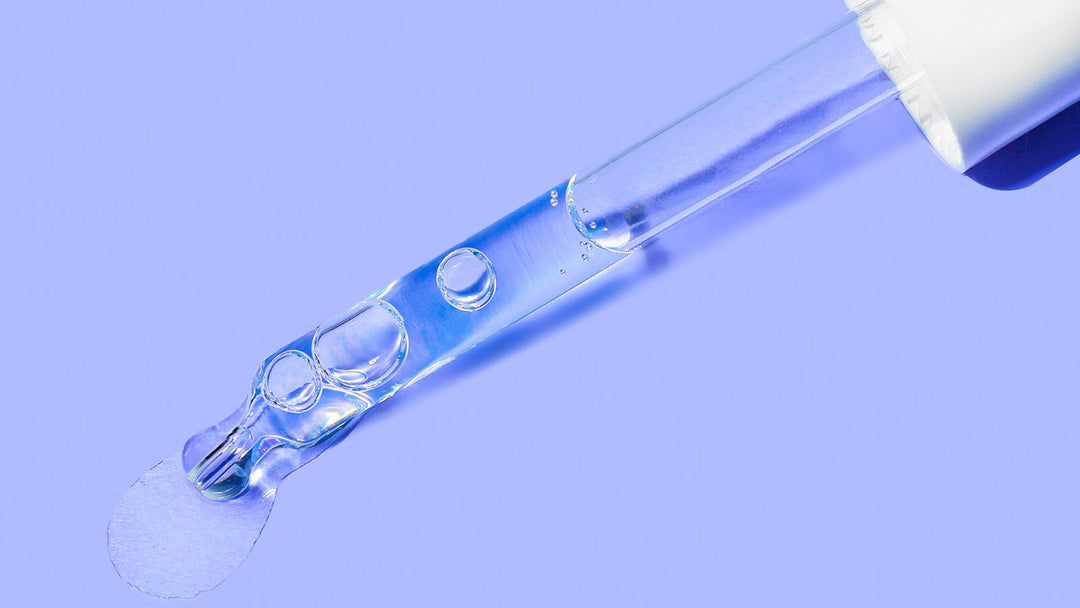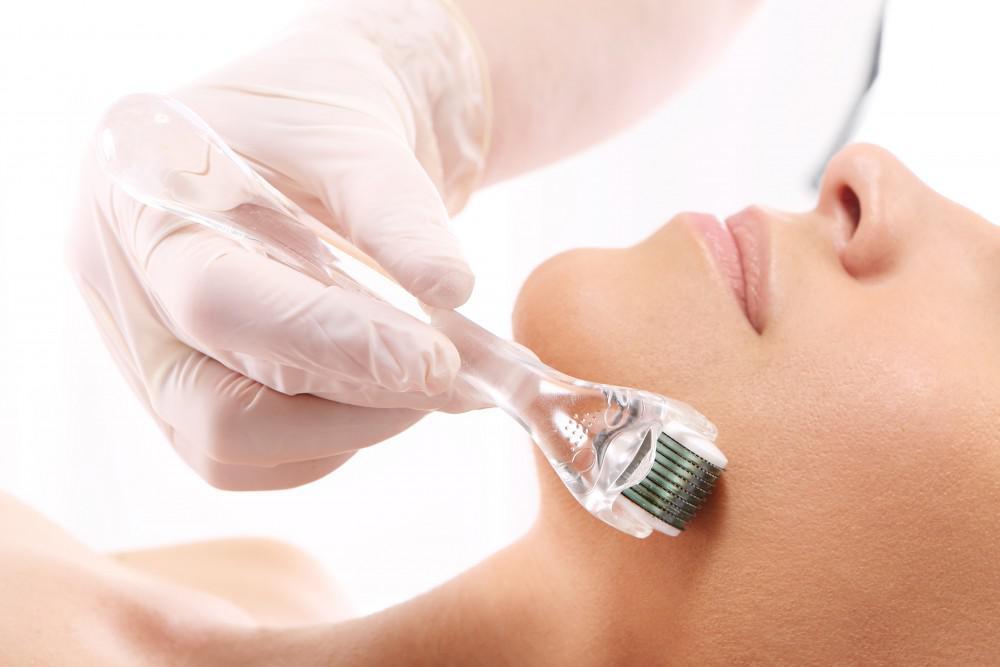What Is Dermaplaning?
If you too enjoy scrolling through social media looking at skincare and beauty trend videos, you have probably already stumbled upon a few posts about dermaplaning. This skincare procedure has become a very popular method for getting smooth skin fast in the last several of years.
Dermaplaning involves the removal of hair on the skin’s surface with the help of a specific scalpel. After the procedure is done, patients get a smoother, softer and brighter-looking complexion. Dermaplaning can help reveal the healthy skin beneath dead skin cell layers. Plus, it helps improve the penetration of skincare products into your skin and prepares your skin for any additional procedures you may want to have, such as lasers and peels.

If you’re looking for a proof for the popularity of this procedure, just type #dermaplaning on Instagram, and an astounding 1.8 million Instagram posts will appear for you to scroll through. These range from videos of the patients undergoing the procedure to before and after photos.
Here’s everything you need to know about dermaplaning, including what exactly the process involves, how often should you do it, how much does it cost and what are the benefits associated with it. This skincare procedure has gained massive popularity among beauty enthusiasts and there are many reasons why.
What Is Dermaplaning?
Dermaplaning is a procedure that involves exfoliating your skin to remove the dirt and vellus hair, which is also known as “peach fuzz.” The process of dermaplaning involves the use of a scalpel or a special tool called a dermatome.
When performing the procedure, the aesthetician or doctor moves the dermatome (which resembles an electric razor) back and forth in order to scrape off the top layer of dead skin buildup and fine hairs and reveal your new healthy skin. Dermaplaning is different from shaving because the goal of this process is to improve the appearance of the skin and not only to remove hairs.
For dermaplaning, professionals use a sharp No. 10 surgical blade which is held at a 45-degree angle to gently scrape the outer layer of the skin containing dull, dead skin cells. During the process, the doctor or aesthetician will gently pull your skin lightly and tightly all while gliding the blade in an upward motion using delicate, feathering strokes.
How to Dermaplane?
To get the best possible results, it’s best to properly prepare your skin before undergoing the procedure. Make sure to first inspect your skin for any cuts or scrapes. Your skin should be healthy and not have any injuries that may potentially increase the risk of infection.
Some people avoid using exfoliants or other skincare products that might make their skin more fragile, such as acne retinoids, several days before undergoing the procedure. Furthermore, it’s not recommended you do dermaplaning if you have active acne, a tan, sunburns, a flaring rosacea breakout, or an inflammatory skin condition such as eczema or psoriasis.
If you do have these and still decide to do this procedure, chances are the process of dermaplaning will worsen these problems. If you also have a lot of deep acne scars, you should be more careful with dermaplaning as the process might nicking your skin during.
How Often Should You Dermaplane
Since dermaplaning thoroughly eliminates dead cells from the skin, it’s best to leave the surface of your face to completely heal and regenerate before you do another dermaplaning session. The entire process of skin cell rejuvenation generally takes one month, so it’s best for patients to wait four to six weeks before they undergo another treatment.
Once you start visiting an aesthetician, they will assess your skin, recommend the right treatments for your condition and skin type and they will be able to suggest a dermaplaning schedule that will best meet your needs and skin goals.
It’s always best to wait the recommended amount of time by your doctor so that your skin cells regenerate completely as that’s the process that gives you the desired end results. Also referred to as scalpel facial, dermaplaning gently scraps away the top layer of skin cells, unveiling a new skin layer. This fresh and new skin is what actually gives that dewy and glowing look. Dermaplaning is the ideal facial treatment when it’s incorporated as part of a patient’s long-term anti-aging strategy.
What Is Dermaplaning Facial?

Dermaplaning is a popular facial treatment that leaves you with a slightly brighter, softer and smoother skin. With the help of a special scalpel, a trained aesthetician or doctor removes the top layer of dead skin cells, peach fuzz, and excess oils. This deep exfoliation treatment can remove up to two weeks of dead skin. The results of this procedure last about three weeks.
Besides unveiling your soft and healthy skin, dermaplaning is also efficient in smoothing out uneven skin texture, providing you with a smoother base for your makeup and foundation. This means you can finally say goodbye to cakey makeup looks and bumpy skin.
Some dermatologists explain dermaplaning like a turbo-charged exfoliator. Even if you do regularly exfoliate your skin at home, dermaplaning is still a highly effective treatment for removing anything your daily exfoliants can’t.
How Long Does Dermaplaning Last
You don’t have to plan any downtime to recover after having a dermaplaning treatment. In the two or three days after the procedure, you might experience redness or feel like your skin is scraped, however, those should be mild sensations. The entire dermaplaning session takes around 30 minutes and requires no downtime.
Right after finishing with the treatment, you might notice your skin looking brighter and softer, however, it usually takes a couple of days to see the full results. After the redness disappears, you should be able to see the results more clearly.
However, keep in mind that the results you get from dermaplaning aren’t permanent. This procedure is effective in clearing up to three weeks’ worth of dead skin cells. After about a month, you will have new dead skin cells and your results will fade.
How to Dermaplane Your Face
If you plan on dermaplaning your face at home, there are a few essentials steps to take first. Before you begin with the whole procedure, make sure to thoroughly cleanse and dry your facial skin.
After that, take your blade in one hand and put it on your jawline. Make sure to hold your skin tight/taut with your opposite hand and gently and lightly stroke the dermaplaning tool, in short, feather-like strokes upward. Continue doing this movement until you have covered your full cheek and jawline area on both sides of your face.
After you’re done with that part of your face, repeat the whole process on your lips, nose, chin, neck and forehead. If you’ve already covered one area, do not repeat the strokes on it again. Once you're finished with the whole procedure, apply your daily moisturizer or treatment product.
Is Dermaplaning Safe

Although it might be trending on social media right now, dermaplaning isn’t necessarily new. This treatment has been around for decades and when done correctly and by a trained professional, it’s safe. The aesthetician or doctor performing the dermaplaning procedure should use a sterile blade to avoid potential skin infections or irritations.
Many patients are worried that all those tiny hairs that dermaplaning does away with will eventually result in stubble after the procedure. However, there’s no room for worry as facial hairs shouldn’t grow back thicker. But as is with laser hair removal, there might be some unexpected cases of hair darkening and perceived thickening, particularly around the sideburns and chin area.
Furthermore, if you have areas of hair that you usually pluck, you might want to avoid dermaplaning those spots as this process will act as if you are shaving the area, and there are chances the hair in those spots to grow back thicker.
Before you start with the process, make sure your doctor or dermatologist knows whether you have a history of cold sores as the dermaplaning procedure might re-activate them (anything that irritates the skin can reactivate the virus causing the cold sores). When you tell them before you undergo the treatment, your doctor might give you an antiviral to prevent any possible outbreaks.
How Much Is Dermaplaning
How much will dermaplaning cost you depends on a few different factors, such as the type of provider that’s performing the procedure (whether it’s an aesthetician or a dermatologist), your location, as well as the number of treatments needed. On average, prices usually range between $100-$150.
Keep in mind though that dermaplaning isn't typically covered by insurance and is charged per session. The results from it will last from three to four weeks as the life cycle of skin cells is about 28 days.
What Are the Benefits of Dermaplaning?
Rejuvenated SkinSince dermaplaning eliminates dead skin cells and promotes the development of new cells, this treatment has a rejuvenating effect on the skin. It evens out your skin tone and reduces hyperpigmentation - the darker spots that can appear on the skin. Overall, it provides a fresher and brighter skin appearance. It smooths the rough spots that appear on the surface of the skin, leaving the patient with a fair complexion.
Less Fine Lines and Wrinkles
The emergence of all those new skin cells help reduce the appearance of fine lines and wrinkles. Plus, the whole procedure slows down aging and wards off some of the early signs of aging.
Say Goodbye to Peach Fuzz
Besides the rejuvenating effect it has on the skin, dermaplaning also eliminates the facial peach fuzz that bothers so many patients. Even though those fine little hairs may seem mostly invisible, you’ll be surprised by the great effect removing them has. Your face will practically glow, and your skin will feel so good to the touch.
Many patients claim that their face feels very smooth and soft after the treatment. One of the best parts of this treatment is that besides the fine vellus hairs, it also eliminates darker and more visible facial hairs.
You Will Apply Cosmetics More Easily
Once your face is clean and clear of all the dead skin cells and peach fuzz, you will notice how easier it is to apply your cosmetics and makeup. You will spare precious minutes from your morning makeup routine and your face will look much better when you have your full makeup on. Have you ever noticed how fine facial hairs stand out once you’ve applied foundation and powder? Well, thanks to dermaplaning, you won’t have to worry about their appearance anymore.
Smaller and Cleaner Pores
Dermaplaning is a deep cleaning facial treatment that gets rid of dirt, oils, and dead skin cells from the pores. After your pores have been cleaned with this aesthetic procedure, they will appear smaller and less noticeable on your face. This will help you maintain a more youthful look as pore size is directly related to age.
Convenient
One of the best things about this treatment is that it is done very fast and easily and requires no downtime. Most dermaplaning appointments don’t last more than one hour, and after you’ve had the treatment, you can freely go on with your day. Many people even book their dermaplaning sessions during their lunch break as they are quick, convenient and very relaxing.
Helps Acne Sufferers
If you’re currently treating your acne, or if you’re dealing with acne scarring from previous outbreaks, a dermaplaning facial treatment can be particularly helpful to improve your condition. Although this treatment isn’t usually recommended for patients with active breakouts, it can still reduce the chances of having future breakouts by cleaning your pores and eliminating all the dirt and oils that can sometimes facial hair accumulate.
The dermaplaning treatment can also reduce some of the redness caused by acne scars from the past. Plus, clearing the face of unwanted hair and skin cells can boost the efficacy of acne medications.
A Gentle and Relaxing Procedure
Although the thought of someone shaving your face with a scalpel may sound scary and intimidating, the entire dermaplaning treatment is very relaxing and enjoyable. It is a gentle procedure that does not involve any harsh chemicals and there’s no tugging, pulling, or scratching on the skin. Dermaplaning facials are completely non-invasive and are safe to be performed on all skin tones and types.
Looking for Dermaplaning near you? Come see us at Rejuva Aesthetics & Wellness Center




